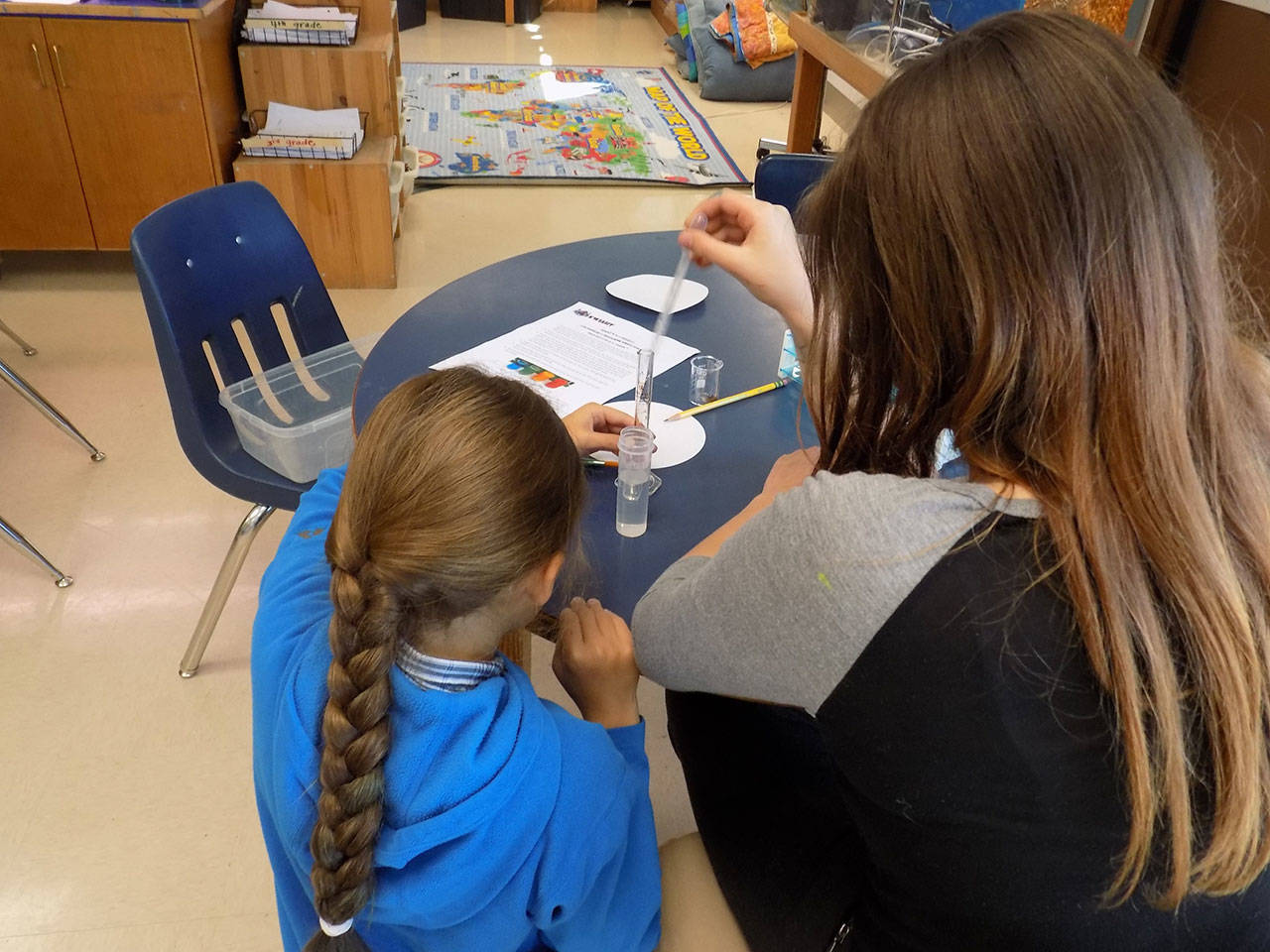Submitted by Kwiaht
Island students have been comparing the nutritional qualities of organically-grown local blueberries with wild-harvested island salal berries.
It’s part of a hands-on biochemistry program organized by Kwiaht. Kwiaht researchers Russel Barsh, Madrona Murphy and Molly Harding taught students on San Juan, Orcas and Lopez how to measure carbohydrates, vitamins and anti-oxidants in berries by using indicators, chromatography, titration, and spectrophotometry. The seven-week STEM project reached over 100 young islanders, grades four through six. STEM stands for science, technology, engineering, and math.
Students’ verdict: salal has a stronger flavor and color than blueberries and is slightly lower in sugars, but has nearly twice the vitamin C and other anti-oxidants. Students also discovered that neither berry contains much vitamin A; only about 1/10 of what can be found in tomatoes.
Satterberg Foundation and the Lopez Thrift Shop supplied grants for the program and teachers Kimberly Malo, Lisa Jenkins, Lorri Swanon, and Andrew Duke assisted.
Like Kwiaht’s cricket chemistry project in island schools last year, the goal of the “What’s in a Berry?” program was to introduce younger students to basic laboratory tools and methods with a practical question related to healthy eating.
“As an islands-based science shop,” Barsh said, “we are committed to finding ways to make better use of foods that are native to the islands and well adapted to growing here, as a contribution to food security and a sustainable local economy.”
Outside of the classroom, Kwiaht’s “Eat Wide and Wild” program has been experimentally growing and taste testing neglected edible native plants such as camas, salal, Indian celery, and the small-fruited native Pacific crabapple. Botanist Madrona Murphy premiered a variety of uses of neglected foods at Kwiaht’s Second Annual Camas festival in September, including crabapple goat cheese ice cream, camas and blue cheese pizza, and salal-flavored sausages, accompanied by an Indian celery sparkling soda.
Good ways to enjoy salal berries, Murphy said, include using them to replace tomatoes in a strong fruity homemade ketchup; seasoning meats and vegetables with a powdered salal zetar; or using a syrup of salal with a little sugar and vinegar to flavor sodas and other drinks. Cheesemaker Andre Entermann of Lopez Island’s Sunnyfield Farm makes a rosy colored fresh goat cheese with powdered salal, and San Juan Island Distillery produces a gin flavored with a hint of salal. “We see many opportunities to use native plants to substitute for imported foods and flavorings,” said Murphy, “as well as making distinctive value-added island food products for sale on the mainland.”
Kwiaht’s food programs and research garden — including a project inventorying the islands’ heritage orchards and apple varieties — have been supported by the Mills-Davis Foundation.
Barsh, Kwiaht’s director, noted that native shrubs such as salal and crabapple are not only promising local sources of food and flavoring, but also important sources of food and shelter for birds, and candidates for “living firebreaks.” “Living firebreaks” reduces the spread of wildfires by using plants that retain moisture and resist ignition in late summer and fall when the threat of wildfire is greatest. Barsh is testing the fire-resistant properties on native shrubs as part of a fire-prevention project funded by the Charlotte Martin Foundation. “The goal here is multi-functional landscaping: lawns, ornamentals and fire-breaks that are easy to maintain in our climate that you can also eat,” he said.
For more info, contact info@kwiaht.org.



